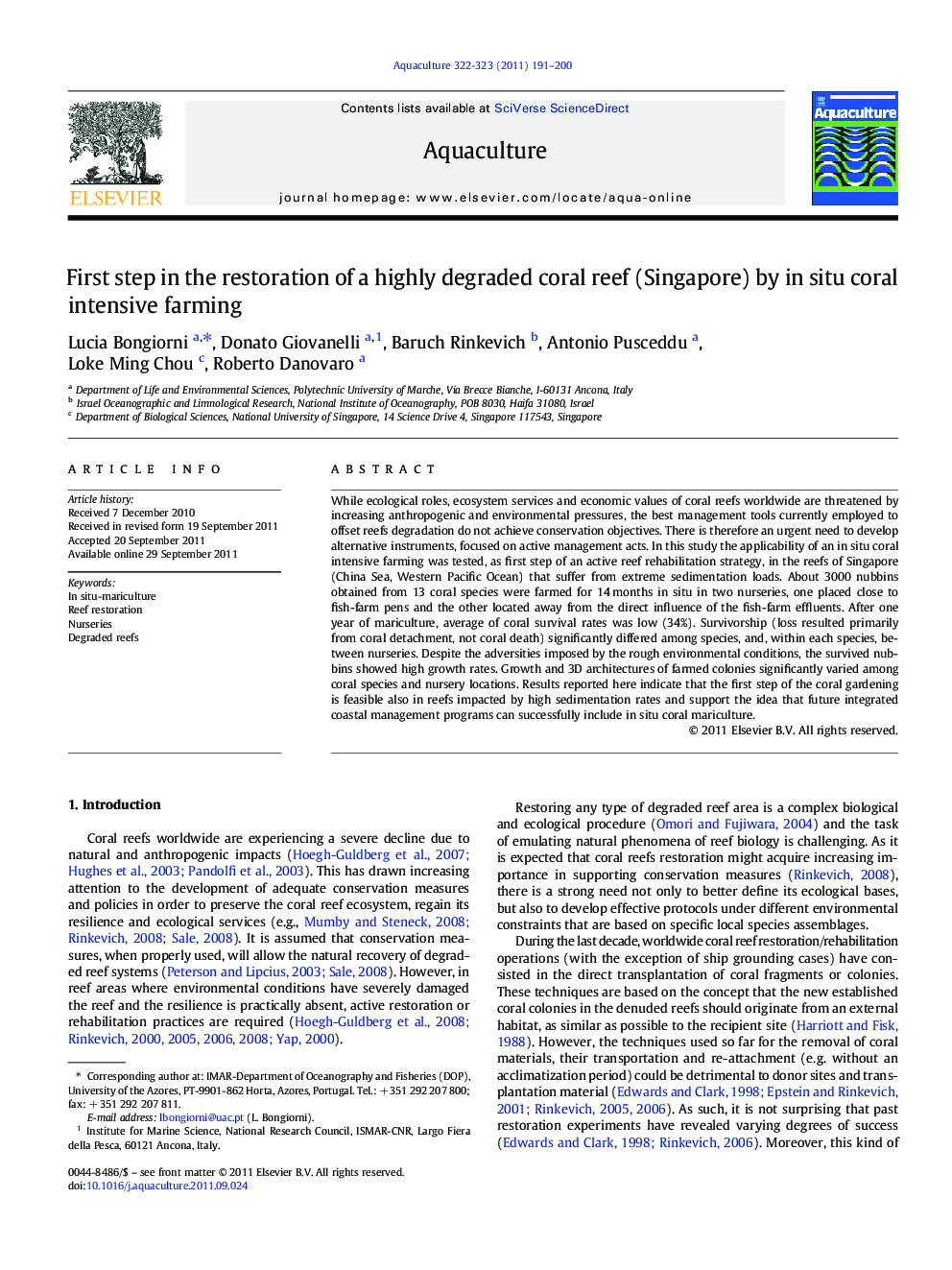| Article ID | Journal | Published Year | Pages | File Type |
|---|---|---|---|---|
| 2422823 | Aquaculture | 2011 | 10 Pages |
While ecological roles, ecosystem services and economic values of coral reefs worldwide are threatened by increasing anthropogenic and environmental pressures, the best management tools currently employed to offset reefs degradation do not achieve conservation objectives. There is therefore an urgent need to develop alternative instruments, focused on active management acts. In this study the applicability of an in situ coral intensive farming was tested, as first step of an active reef rehabilitation strategy, in the reefs of Singapore (China Sea, Western Pacific Ocean) that suffer from extreme sedimentation loads. About 3000 nubbins obtained from 13 coral species were farmed for 14 months in situ in two nurseries, one placed close to fish-farm pens and the other located away from the direct influence of the fish-farm effluents. After one year of mariculture, average of coral survival rates was low (34%). Survivorship (loss resulted primarily from coral detachment, not coral death) significantly differed among species, and, within each species, between nurseries. Despite the adversities imposed by the rough environmental conditions, the survived nubbins showed high growth rates. Growth and 3D architectures of farmed colonies significantly varied among coral species and nursery locations. Results reported here indicate that the first step of the coral gardening is feasible also in reefs impacted by high sedimentation rates and support the idea that future integrated coastal management programs can successfully include in situ coral mariculture.
► We tested the applicability of in situ coral intensive farming in waters of Singapore. ► Low coral survival, mainly due to detachment, differs among species and nurseries. ► High coral growth rates vary among species and between nurseries. ► Moderate exposition of corals to fish farm speed up growth rates in certain species. ► Coral gardening is feasible in reefs impacted by high sedimentation rates.
